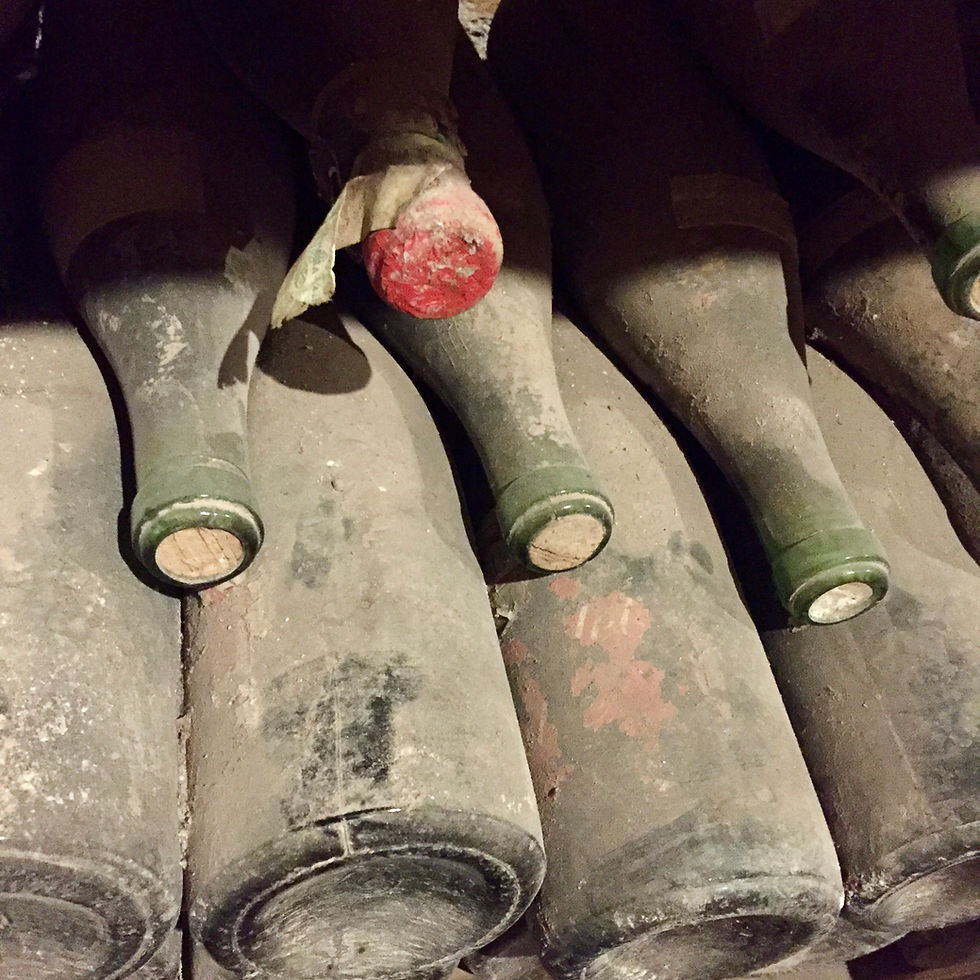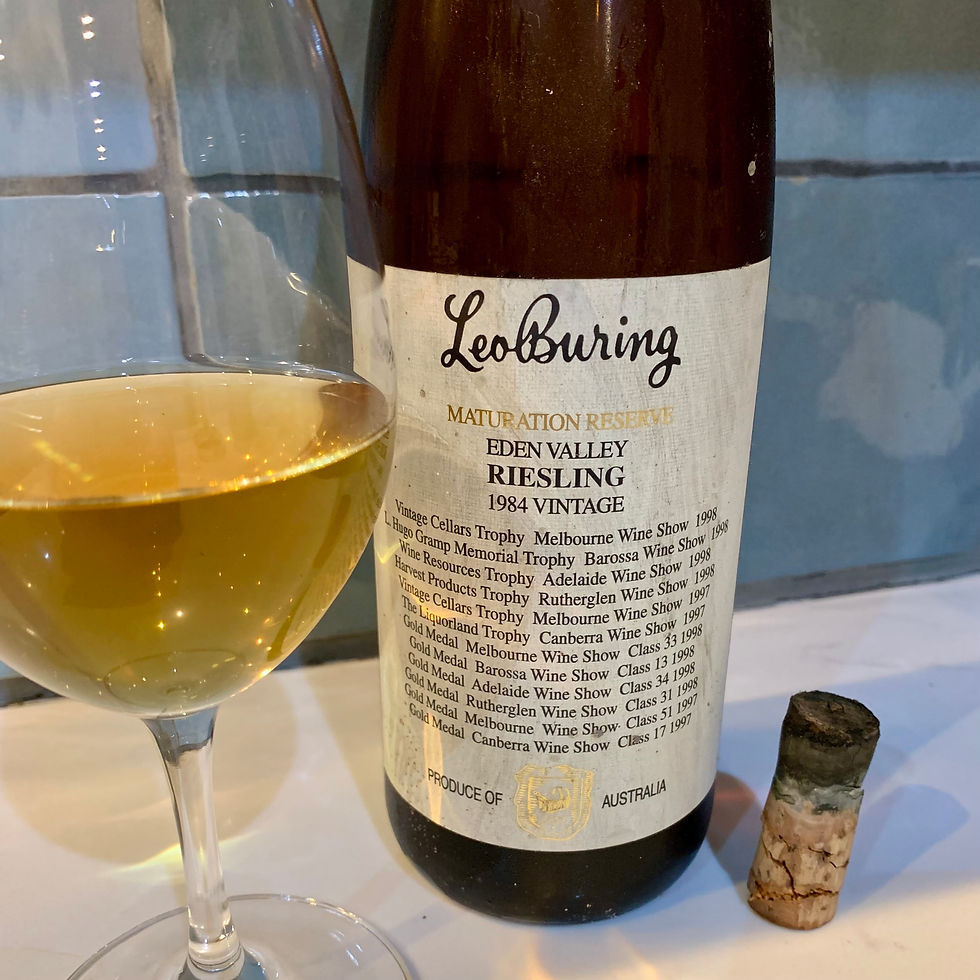
Venerable, dusty bottles in a cellar in Maipo, Chile that caught my eye on a trip a few years ago. They're probably still there
If journalists ought to dispense advice only on subjects of which they have had personal experience, I am better equipped than most to advise on cellars and cellaring. But if wine writers ought to know how to avoid all the pitfalls of storing wine at home, I am not a shining example.
I do feel I am making progress, however, even if I wouldn’t go so far as to claim that my current arrangements are cellar nirvana.
My first brush with a cellar was in a large Victorian house where my status lay somewhere between house-sitter and squatter. While I was away briefly, the house was burgled and the thief found the cellar. It was his lack of discrimination that really upset the owner. He opened, and left, a bottle of Château Margaux and three other classed growth clarets, but polished off two bottles of Irish cream liqueur – abandoned samples from my first assignment as an editorial assistant on Wine & Spirit International magazine. First lesson: lock your cellar.
When I moved in to my own property, I learned the hard way about temperature and wine. Without a cellar, I stored wine in an unheated hall and then in an understairs cupboard. Both were fine in winter, but the cupboard went up to 28ºC one long hot summer and the hall reached 32ºC. Wine started to seep from corks and capsules and, while some wines proved surprisingly robust, others deteriorated. Today, the overall quality of corks is much better, so I would probably see less damage, but those sorts of temperatures are still very ill-advised. Never again.
Wisely (sometimes I was) I was keeping some wines in merchants' cellars (including in The Wine Society’s members’ reserves). Even so, it was clearly time to move to a house with a cellar. Among those I looked at was one described as having a ‘purpose-built underfloor cellar’. Visions of cavernous vaults were quashed by the solemn unveiling of a trapdoor in a parquet floor over a space for just 24 bottles. I didn’t buy the house.
Instead I bought one without a cellar (don’t ask, it’s a tortuous story) and had a Spiral Cellar dug 2.25 metres into the kitchen floor. This is an ingenious invention – a central staircase with concrete bins fanning out – but I had problems. The aggregate for the cement, which was bought locally, had a pungent chemical smell.
For five months, I left the door in the floor open – in the middle of the kitchen, remember – and I piled up cases of wine around the house. Eventually, after the concrete had been painted with sealer, the smell receded and I cellared my wine.
That’s when I discovered that the Spiral Cellar housed fewer bottles than anticipated (the numbers promised in the publicity material were based on a significant proportion of tall, slim German/Alsace type bottles, of which I had few). On top of that, the cellar couldn’t take many wooden cases, so I had to take the Bordeaux bought en primeur out of the wooden cases (I wish I had kept them: they make very good book shelves).
I supplemented the Spiral Cellar with a wine cooler cabinet (aka wine fridge), which was satisfactory, if expensive, until it was full, which it soon was.
Time to move again: this time to a house with a small cellar in the basement and two larger, very cold and damp 200-year-old brick cellars under the garden.
Perfect? Not quite. The temperature was ideal. At a steady 6–7ºC all year, the wines aged very slowly and steadily. Meanwhile, the humidity kept the corks from drying out. The trouble was it was so damp that labels were devoured by both mould and garden snails. The solution was to buy plastic cellar tags to hang round the necks of the bottles and laboriously write the names and vintages on each one and also to spray the wine labels with hairspray. It was already too late for some, so there have been some interesting blind-tasting over the years.
What I didn’t anticipate was dry rot. Fortunately, I spotted it early, before it got into the house, but I had to remove all the wine – hundreds and hundreds of bottles – while the cellars were treated. I then had to replace all the wooden racks with specially treated racks and remove all bottles from wooden cases and paper wrapping. But having a cellar is fun, right?
It all worked very well for years. Almost too well: the cellars were so cold, damp and poorly lit and access was so difficult, with heavy doors that sometimes stuck and huge bolts and padlocks, that I was a bit lazy about going to get wine out and would buy more wine instead.
Still, it meant I had plenty of wine – more than I realised when I did an inventory because we were on the move again. This time to an even older house with thick walls and a large, north-facing, semi basement with no heating, which I immediately earmarked as the wine cellar.
The house hadn’t been lived in for a while when we viewed it, which we did with difficulty under the strictures of a Covid lockdown. It was unheated and very brisk. We moved in during another lockdown in the middle of winter. It was bitterly cold outside and, yes, bitterly cold inside, especially in the cellar. Still, it had to be good for the wine. Or so it seemed.
Gradually, as the weather warmed up, so did the unheated semi-basement. Not disastrously, but having kept my wine in perfect cellar conditions for so long, I wasn’t prepared to compromise; so I invested in wine cooler cabinets for all the wines being cellared medium to long term.
And now that I have a cellar with easy access, I am, well, accessing it. If you’ll excuse me, it’s time to buy some more wine.

Keeping cellar records is obviously important and I do my best, but things occasionally slip through the net. A few days ago I discovered this 41-year-old Leo Buring Eden Valley Riesling Maturation Reserve 1984, a single bottle of a late release at the bottom of a rack of dry Australian Rieslings. The wine level in the bottle was low shoulder, the cork looked weak, but came out in one piece, as you can see above, and the colour of the wine was mid-gold. And the wine was magnificent: still fresh, vibrant, concentrated and intensely flavoured with citrus fruit (lime and orange), notes of honey and toast, thrilling acidity and great length. 97/100
TIPS ON STORING WINE
The public enemies of wine are heat, light, lack of humidity and constant movement/vibrations, but the first two cause the most problems.
An ideal storage temperature is a steady figure between 7–14ºC (45–57ºF) with minimal fluctuations.
There’s nothing wrong with a lower temperature – it will simply slow the ageing process – but it’s crucial that wine doesn’t freeze.
If you store wine at temperatures of 15–21ºC, it will age more quickly, especially at 20–21ºC, so you shouldn’t be thinking of keeping wine for many months at these temperatures, above all white, rosé, Champagne and other sparkling wines. Red wines are generally more robust.
Wine should be stored in the dark or in dim light. Sunlight can cause very rapid deterioration – a phenomenon known as light strike. White, sparkling and rosé wines are especially sensitive to it; all the more so if they are in clear glass bottles. I can't emphasise the danger of light enough.
Humidity keeps natural corks moist, protecting wine from unwanted oxidation.
Constant vibrations can age wine more rapidly, which is why special wine fridges/wine coolers have been designed.
Photograph by Joanna Simon


Comentarios